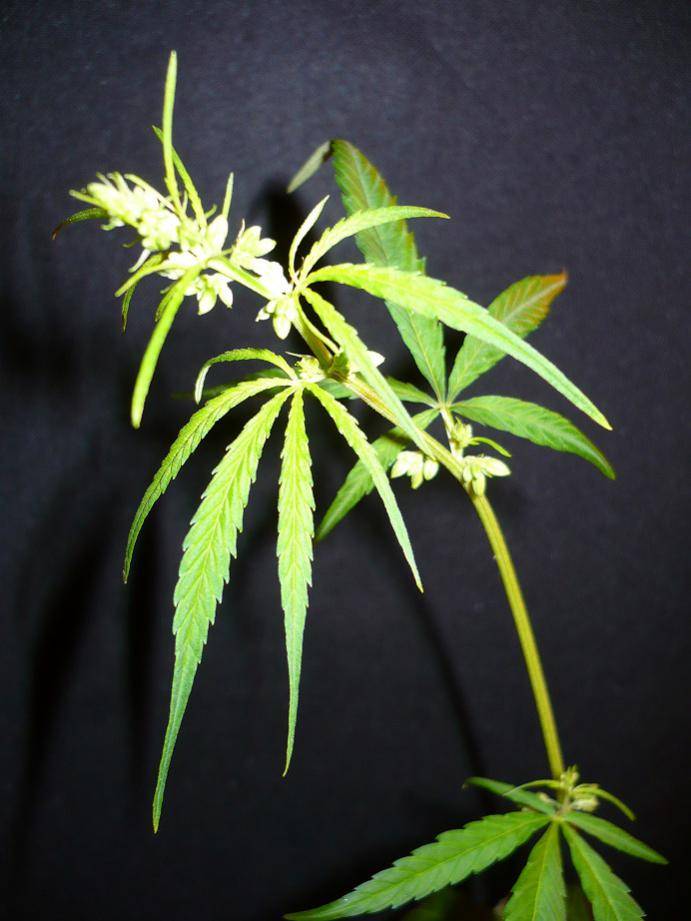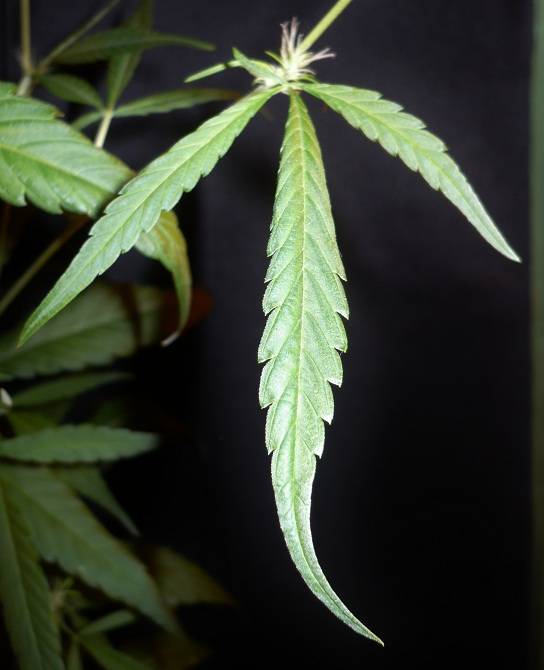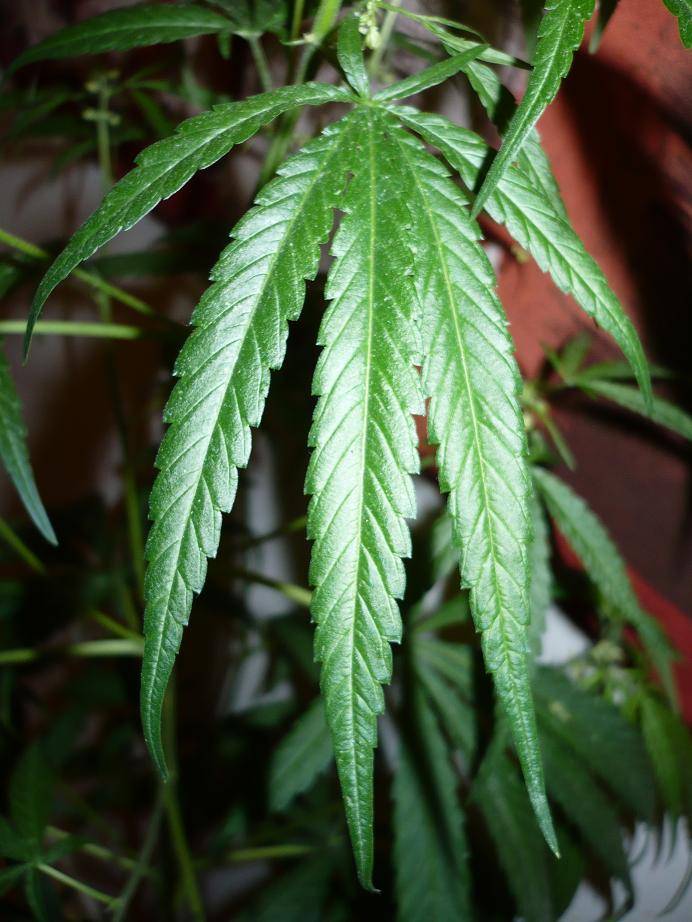Beautiful
-
ICMag with help from Phlizon, Landrace Warden and The Vault is running a NEW contest for Christmas! You can check it here. Prizes are: full spectrum led light, seeds & forum premium access. Come join in!
You are using an out of date browser. It may not display this or other websites correctly.
You should upgrade or use an alternative browser.
You should upgrade or use an alternative browser.
Liamba
- Thread starter vapor
- Start date
We found the malawi and angola red were very good in colder weather this season compared to most others....nice shots!
I have only tested with mydx{my angola red 13 cut} so i will get some done with hplc here soon my buddies just setting up for some testing...here a pic of the mydx info for angola red 13{ seeds were from the 70's}
I have only tested with mydx{my angola red 13 cut} so i will get some done with hplc here soon my buddies just setting up for some testing...here a pic of the mydx info for angola red 13{ seeds were from the 70's}
Attachments
We found the malawi and angola red were very good in colder weather this season compared to most others....nice shots!
I have only tested with mydx{my angola red 13 cut} so i will get some done with hplc here soon my buddies just setting up for some testing...here a pic of the mydx info for angola red 13{ seeds were from the 70's}
Angola Red #13
I'm certain that cut is selected from LMN stock.
Which is neither from the 70's nor Pure.
I'm testing out AR#13 x O.Haze right now.
Hi broMy angolese as grown by several friends the past season. Thank u brothers!
Outdoors in Germany, coping with below zero temps inside a greenhouse:
View Image
View Image
View Image
Indoors US:
View Image
After a few generations of selection, she's testing 12-15%THC quite consistently. Interesing high terpene contents too. Not bad for a pure african, right?
Vibes.
Here is the first repro made in 2013. With the seeds coming directly from Malanje, Angola, via Mustafunk. With 3 boys & 5 girls, i need to test it once again!
Classik African leaf
Vibes
Last edited:
Angola Red #13
I'm certain that cut is selected from LMN stock.
Which is neither from the 70's nor Pure.
I'm testing out AR#13 x O.Haze right now.
All i can do is go by what was written on the seed pack and what was told me in person. I have grown a bunch of angolas from 3 or 4 diff sources, aswell different packs from and crosses of angola red from LMN collection. I had a a haze/angolared x bangi, female i grew for a few years similar to Angola red but you could tell its a cross{great weed btw}. They all carry something similar in the terps profile.. Anyways maybe someday we can get some genetic testing done and see where it all flushes out....
When i grew the seeds there was some variation But you could tell they were all in the same family easy, didnt seem to me like a cross, similar buds, similar smells. All were intersex to varying degrees except for 13. All had similar bud profiles and smells varying a wee bit but nothing like when we crossed blueberry to thais etc and what i would see. And there were phenos that looked and smoked like hemp or not much better lol..
I have heard all the controversy and all i can say is what i see whith my own eyes and experiences. Peace and light///
All i can do is go by what was written on the seed pack and what was told me in person.
Anyways maybe someday we can get some genetic testing done and see where it all flushes out....
I have heard all the controversy and all i can say is what i see whith my own eyes and experiences. Peace and light///
Then I'm sure this may interest you. Phylos genotype results on LMN Angolese samples, S1s made by Charlie Garcia years ago with the original LMN clone (mom of the Angolese/Thai hybrid) handed to him when he was part of ACE, along with LMN himself. Same S1 seeds you received via Rainha Ginga and reported here, Vapor:
I've found funny the test found heritage matching with Skunk, Berry and so on. Also genetic variation shows a high degree of variation and heterozygosity found on hybrids and poly-hybrids. Plus no direct relation with any other of the many african landraces being tested by Phylos. Some distant relation to other african landraces though, which leads me to think it's definitely a hybrid with an african of some sort.
This "Angolese Red" always had a dubious pedigree in my opinion. Tag said 70s Angolese? I've always questioned that after my own experience and research, but now I'm simply laughing at it. Especially if we compare those results to the ones from my samples, from the imported Angolese I've been growing and breeding with during the past few years:
Population heritage 100% landrace and very small genetic variation, pure pedigree lol. Plus the results also showed interesting DNA matches as inmediate family members with other Congo Pointe Noire and Ghana. Other distant family members were Tanzanian and Zambia. All this african genetics are up there, very close and together in the same cluster. Besides some are separate by decades and came from totally different countries and sources, so no relation whatsoever. But then they are matching genetically after all!
And last but not least, another interesting revelation, direct relation between local angolese and the Indian landrace Rob Clark submitted, as well as some other Nicaragua and Paraguay samples too!! Which finally gives us a beautiful clue on the historical speculation of Portuguese slaves from Central Africa taking genetics into South America through the Portuguese colonies in the New World.
After so many years trying to find out the truth, being questioned and even called a LMN hater by some, I feel happy that science has shed some light on this.
Vibes.

That's not a surprise, but that's funny, you shall do the same with the Banghi Congo...
Simply look what is in your hands, looking Angola & Banghi how can we say "it is Angola from Angola and Banghi from Congo"? They are good but hybrides, and what is the problem, nobody hate LMN, why is it so hard to speak about this?
Btw, a lot of Africans are related, here are a few leafs
Angola Malanje

Centrafricaine Bayanga

Ghana

Classik "crocodile" leaf, the same with some Senegalese, some Malawi or some Ethiopian...
Viibes
"LMN hater" LOOOOOOL[FONT=Arial, Helvetica, sans-serif]After so many years trying to find out the truth, being questioned and even called a LMN hater by some, I feel happy that science has shed some light on this. [/FONT]
Simply look what is in your hands, looking Angola & Banghi how can we say "it is Angola from Angola and Banghi from Congo"? They are good but hybrides, and what is the problem, nobody hate LMN, why is it so hard to speak about this?
Btw, a lot of Africans are related, here are a few leafs
Angola Malanje
Centrafricaine Bayanga
Ghana
Classik "crocodile" leaf, the same with some Senegalese, some Malawi or some Ethiopian...
Viibes
Last edited:
Yeah man... I was amazed at the fact that so many of the african samples tested by Phylos were genetically close: Ghana, Angola, Ethiopian, Tanzanian, Zambia, Congo... even though they came from different time, location and sources.
I think this has something to do with the routes and trade from the tribes who were using the herb traditionally within their culture. The Bushmen, Bantus, San people, Pygmies and so on. Seeds and weed was something they used to carry around and trade for.
Same with the introduction of Cannabis into Africa... I think all the african genepool came after a handful of different seeds and hot spots, and from there, they spreaded all over the continent.
Peace.
I think this has something to do with the routes and trade from the tribes who were using the herb traditionally within their culture. The Bushmen, Bantus, San people, Pygmies and so on. Seeds and weed was something they used to carry around and trade for.
Same with the introduction of Cannabis into Africa... I think all the african genepool came after a handful of different seeds and hot spots, and from there, they spreaded all over the continent.
Peace.
I'm very curious to see the results of the next tests.
Nice to heard that Ghana is related to India too, some peoples and botanists insist that cannabis was not introduced to Nigeria or Ghana until after the Second World War (from Thaïlande), but in one of his journals Sir Richard Burton (19th century!) said it was growing wild in Lagos, Nigeria.
So it's good to do these tests, because many people make assertions based on supositions. These tests are infallible ...

Nice to heard that Ghana is related to India too, some peoples and botanists insist that cannabis was not introduced to Nigeria or Ghana until after the Second World War (from Thaïlande), but in one of his journals Sir Richard Burton (19th century!) said it was growing wild in Lagos, Nigeria.
So it's good to do these tests, because many people make assertions based on supositions. These tests are infallible ...

Good info Mustafunk, we're finally actually able to pin point the obvious hybrids in the landrace community and the list is already getting long  Dalat, Malawi and others..
Dalat, Malawi and others..
That India strain in the lower grapgh might be a mislabeled cutting though as it is listed as having a clonal relationship with a cutting called Nigeria. That's how I interpret that anyway.
That India strain in the lower grapgh might be a mislabeled cutting though as it is listed as having a clonal relationship with a cutting called Nigeria. That's how I interpret that anyway.
Ill have a look and see what it says.. Not quite sure from a quick glance what it all means... non the less testing is important... and so is the truth so, Some point in early may ill get to talk with joanthon page in person and get him to do some testing for me, we have chatted about it already....trade routes are all important in this story...
mean while in the garden some angola red 13 x original haze..
mean while in the garden some angola red 13 x original haze..
Then I'm sure this may interest you. Phylos genotype results on LMN Angolese samples, S1s made by Charlie Garcia years ago with the original LMN clone (mom of the Angolese/Thai hybrid) handed to him when he was part of ACE, along with LMN himself. Same S1 seeds you received via Rainha Ginga and reported here, Vapor:
View Image
I've found funny the test found heritage matching with Skunk, Berry and so on. Also genetic variation shows a high degree of variation and heterozygosity found on hybrids and poly-hybrids. Plus no direct relation with any other of the many african landraces being tested by Phylos. Some distant relation to other african landraces though, which leads me to think it's definitely a hybrid with an african of some sort.
This "Angolese Red" always had a dubious pedigree in my opinion. Tag said 70s Angolese? I've always questioned that after my own experience and research, but now I'm simply laughing at it. Especially if we compare those results to the ones from my samples, from the imported Angolese I've been growing and breeding with during the past few years:
View Image
Population heritage 100% landrace and very small genetic variation, pure pedigree lol. Plus the results also showed interesting DNA matches as inmediate family members with other Congo Pointe Noire and Ghana. Other distant family members were Tanzanian and Zambia. All this african genetics are up there, very close and together in the same cluster. Besides some are separate by decades and came from totally different countries and sources, so no relation whatsoever. But then they are matching genetically after all!
And last but not least, another interesting revelation, direct relation between local angolese and the Indian landrace Rob Clark submitted, as well as some other Nicaragua and Paraguay samples too!! Which finally gives us a beautiful clue on the historical speculation of Portuguese slaves from Central Africa taking genetics into South America through the Portuguese colonies in the New World.
After so many years trying to find out the truth, being questioned and even called a LMN hater by some, I feel happy that science has shed some light on this.
Vibes.
Attachments
How would the Africans and Asians be so closely related, considering there is also evidence of close genetic relationships between places as disparate as Ethiopia, Nigeria, and Zambia? When would cannabis have diffused this way in Africa, the theoretical Bantu expansion? They were early farmers that spread far across Africa. It's possible that people in southern and eastern Africa encountered S/SE Asian plants at some point (contact with Arabs, Persians, Indians, and Polynesian settlers), but I don't know how true that could be for people like the Aka people in the Congo.
But then who would have brought the cannabis to these Africans, cannabis that is clearly mostly related to the S./SE Asian pool? Especially at such a necessarily early time frame. The two Moroccan and Lebanese samples are situated closer to European & American hemp, and Chinese and Japanese plants. Some samples from Pakistan and Afghanistan are somewhat close to them too.
But then who would have brought the cannabis to these Africans, cannabis that is clearly mostly related to the S./SE Asian pool? Especially at such a necessarily early time frame. The two Moroccan and Lebanese samples are situated closer to European & American hemp, and Chinese and Japanese plants. Some samples from Pakistan and Afghanistan are somewhat close to them too.
https://archaeologynewsnetwork.blog...eveal-trading-routes.html#cskt6JsmZI9OKQ7M.97
this was interesting...
this was interesting...
The book Herodotus wrote in 324 BC, he talks about a tribe in that area ( Don't know exactly where) He doesn't say exact locations. But this tribe put the buds, (Herodotus) say's seeds, or flowers) under large wooden thing. I picture a huge Pallet looking thing. Anyway, he say's they would light a fire, and the smoke plumed through the openings, and the tribe would dance and go nuts inhaling the smoke. Herodotus, was Greek. His travels didn't take him too far from Greece. It might have been in Anatolia. Herodotus was the first ancient travel guide.
Here is another paper concerning trade between India and Africa: https://www.cambridge.org/core/services/aop-cambridge-core/content/view/S0003598X00067934
PlasmaTube
Well-known member
Latest posts
-
-
-
Aktuell: 20 New Zealand mit 2x Sanlight 3-80 auf Cocos im 150 x 80 Zelt
- Latest: El Pollo Diablo
Latest posts
-
-
-
Aktuell: 20 New Zealand mit 2x Sanlight 3-80 auf Cocos im 150 x 80 Zelt
- Latest: El Pollo Diablo






